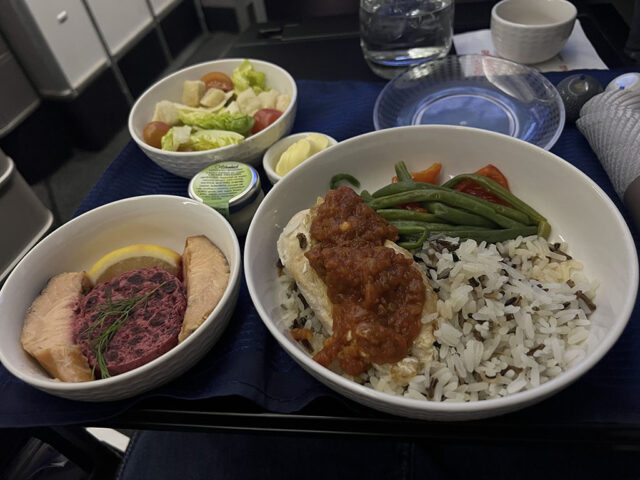If you travel frequently, you may have given thought to the idea of using points and miles to help you travel more — and for less money.
And if you travel often for sports, there’s no reason that you can’t employ points and miles to help you see more games in more cities for less money, too.
The practice of using loyalty programs to get free flights, hotel stays and more has been in place for decades now, and most avid travelers take advantage of them in some fashion.
Personally, I have been earning points and miles for more than 20 years — pretty much ever since I began my pursuit of visiting every stadium in the four major sports leagues. It’s why I am currently a lifetime elite member of the Marriott Bonvoy rewards program, and also hold premium status on multiple airlines.
About five years ago, I began paying more attention to my points and miles earnings out of a desire to supercharge my travel experiences, such as accessing premium-class cabins on flights, staying in higher-end hotel suites and other cool travel perks.
What I’ve learned in that time is that, while strategically obtaining credit cards and spending to earn points and miles takes some getting used to, it can yield some pretty fun and fanciful rewards.
In 2024, I traveled to Europe and back using miles accumulated from years of earning. Virtually for free (save for a total of about $85 in fees), I flew from Los Angeles to London in British Airways’ premium economy cabin. Then, after enjoying two weeks of watching soccer matches and touring stadiums, I journeyed home from Amsterdam in United’s Polaris business class.
That return flight was my first time ever in a lie-flat seat, and I can now attest first-hand that it is just as nice as you’ve imagined. Ever wish an 11-hour flight was even longer? Flying business class will make you think that.
Best of all, I still have a few hundred thousand points remaining for use on my next trip, to be determined.
So, how do you get started with earning points and miles? And how can you use it to travel for sports? Let’s explore the ways below.
How to get into earning points and miles
First things first: How do travelers earn enough points and miles to take multiple exorbitant international trips a year?
It used to be that these were perks reserved for truly frequent travelers, ie. businesspeople who needed to be on the road for large chunks of time (think half of the year or more).
Nowadays, these same perks can be attained through the usage of travel rewards credit cards to earn lucrative points and miles bonuses. It’s a practice that the airlines and bank partners seem to very much be OK with — as evidenced by the mid-flight credit card pitches often given by flight attendants.
Practically every major travel brand has a credit card now, from all of the major airlines to the top hotel chains. Even the banks themselves are knee-deep in the game, with numerous rewards cards (like the this one and this one, both of which I have) offering customers the chance to transfer earned points into airline miles and hotel points.
So yes, avid points and miles earners can and do sign up for dozens of credit cards, and spend liberally on them to ensure they receive the bonuses.
Doing this requires A) a healthy sense of financial responsibility and B) a lack of trepidation regarding things like your credit score and the idea of carrying some debt, at least temporarily. But generally speaking, if you have A, then B should not be something to worry about.
To be perfectly clear: In no way do I endorse anyone increasing their spending in pursuit of travel goals if their finances can’t actually handle it. Please don’t run up crippling debts just to score 50,000 airline miles!
Which credit cards are right for you?
If you’re ready to see what credit cards you might be interested in signing up for, check out Itinerant Fan’s Top Credit Cards hub, maintained and updated regularly by our partners at Daily Drop.
What’s the strategy behind points and miles?
Most people get into the points and miles game with one of two approaches in mind: Either they look to take advantage of their loyalty toward certain brands and accelerate their points earnings with them, or they have a specific travel goal in mind and sign up for the credit cards that will most quickly push them toward earning it.
So, for example, if you live in an American Airlines hub city like Dallas or Philadelphia, you can concentrate your efforts on earning AAdvantage miles by applying for a branded credit card. Or, if you’ve found you prefer staying in Hyatts above other hotel brands, you can get a card that earns (and gives you a bonus in) World of Hyatt points.
Bank cards are sort of a catch-all in that you don’t need to be loyal toward a particular travel brand to use them to your advantage. Depending on the bank and the travel program, many point transfers from one to the other are at a 1:1 ratio — but it behooves you to know where these preferred ratios exist and whether they can benefit you toward your specific goal.
Often, the size of the introductory bonus is the biggest allure. It’s typical for travel cards to offer bonuses in the 30,000 to 50,000 point range. But sometimes, those bonuses go up for a limited time — think of it as the credit card version of a doorbuster deal — and then it becomes an ideal time to apply. (More on how to find those types of offers below.)
By the way, the usefulness of a travel card does not stop once you’ve earned the introductory bonus. Each card allows you to earn points and miles based on spending, of course. In addition, each has certain partnerships offering bonus earnings.
Some partnerships I’ve seen in the wild include 3x to 5x earnings if you use the card to take an Uber or Lyft ride, or when dining out at major restaurant chains. And yes, some cards award bonuses for using them to buy event tickets on Ticketmaster or StubHub.
Top points and miles resources
It’s become easier and easier these days to earn points and miles, and an entire cottage industry has emerged from showing people how to effectively earn and spend them.
Numerous websites such as The Points Guy, One Mile at a Time and Prince of Travel exist to help people strategize on how to earn points, as well as how to spend them economically.
In addition, newsletters such as Daily Drop, of which I’m a loyal reader, deliver the latest news in the points and miles world directly to your email inbox.
All of these websites and publications maintain constantly updated lists of current credit card offers, and will alert frequent visitors and subscribers when a particularly enticing deal has been posted — or is about to go away. (You can also sign up for the Itinerant Fan newsletter, which includes info about points and miles card offers when pertinent.)
The more you read about points and miles, the more you can find more beneficial offers to your specific goal.
For example, you can sometimes spend far fewer miles booking a premium-class seat on an international flight for a certain airline if you do so via one of those airline’s partners. Fancy spending less than 50,000 points to fly somewhere far away in luxury? It’s possible if you pay attention to what’s out there.
How points and miles can benefit sports fans
OK, so maybe you’ve gotten this far and are wondering: Are there specific points and miles deals for sports fans? And the answer is: Very much so.
Many travel brands offer luxury sports experiences that are attainable through points spending or points auctions. As a Marriott Bonvoy elite member, I’ve seen several enticing offers through them that include:
- Suite tickets to a Knicks or Rangers game at Madison Square Garden
- Premium-level tickets for Lakers and Kings games at Crypto.com Arena
- Ticket and hotel packages for a Manchester United match at Old Trafford
- Meet and greet with a Formula 1 driver before a race
Beyond this, there’s the aforementioned points bonuses if you use certain cards to purchase event tickets on Ticketmaster, StubHub and other ticket outlets.
Don’t forget that many arenas partner with credit card companies to offer benefits to those banks’ customers. Washington’s Capital One Arena, home of the Wizards and Capitals, naturally gives Capital One card holders discounts on food, drink and merchandise, as well as a dedicated entrance.
American Express isn’t a naming rights sponsor of any major stadium in the U.S., but does offer these same perks to its customers at several venues. For example, at Crypto.com Arena in Los Angeles, there’s a dedicated entrance for AmEx cardholders, and holders of the Platinum card can gain access to the Centurion Lounge on the arena’s premium level.
In addition, there’s utility in simply using your hard-earned points and miles to fly to that sports city you’ve always wanted to see for free, or to stay in a hotel right next to the stadium for free instead of spending the jacked-up event rate.
I’ve put many sports trips together over the years using free flights and/or hotels, and saving that money allows you the flexibility to plan another trip. Earning points and miles expands your horizons in that regard, which is why I think it’s well worth it for any traveling sports fan to consider.
Original publish date: June 12, 2024
Most recent update: April 13, 2025






 Edward de la Fuente | Itinerant Fan
Edward de la Fuente | Itinerant Fan
